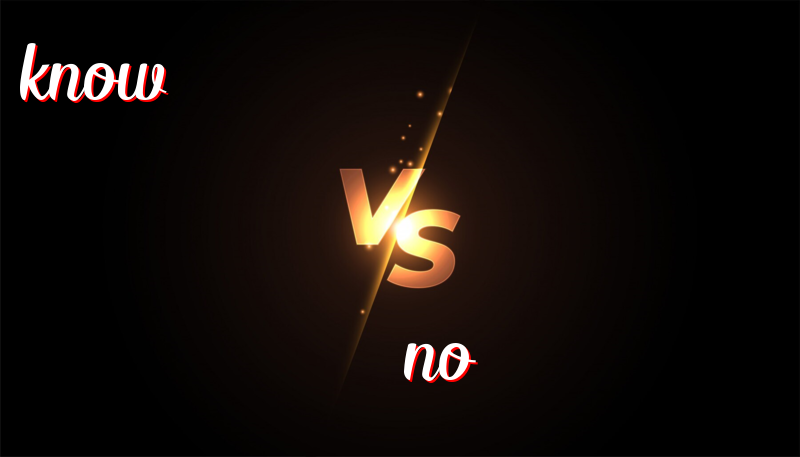Know More, No Confusion!
Understanding “Know” vs. “No”
“Know” and “No” are two words that sound the same but have different meanings. We call these words “homophones.” Let’s explore their differences, how to use them, and a trick to remember which is which.
History of “Know” and “No”
“Know” comes from Old English “cnawan,” which means “to recognize” or “to understand.” It is about having knowledge or being aware.
“No” comes from Old English “nan,” which means “not any” or “none.” It is used to show refusal or deny something.
How to Use “Know”
“Know” is a verb. We use it when we talk about being sure about facts, information, or people.
- I know the answer to the question.
- Do you know where the library is?
- She knows how to ride a bicycle.
- They know the story by heart.
- We all know that water freezes at 0 degrees Celsius.
How to Use “No”
“No” is a word we use when we disagree or want to say something is not true or not allowed.
- No, I do not want any cake.
- There are no apples left in the basket.
- She said no to the invitation.
- No, you cannot go outside right now.
- He has no idea what to do next.
Trick to Remember the Difference
Think of “know” as the one with a “k” like “knowledge” and “keys” to understanding.
Think of “no” as the one to say “nay” or “not.” It has an “o,” like “off” or “out,” meaning not happening.
Summary
Use “know” when talking about being aware or having information. Remember the word “knowledge.” Use “no” when you want to refuse or say something is not true. Picture saying “not” with an “o.”

Leave a Reply
You must be logged in to post a comment.